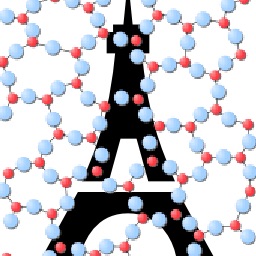Enthalpy landscape dictates the irradiation-induced disordering of quartz
Under irradiation, minerals tend to experience an accumulation of structural defects, ultimately leading to a disordered atomic network. Despite the critical importance of understanding and predicting irradiation-induced damage, the physical origin of the initiation and saturation of defects remains poorly understood. Here, based on molecular dynamics simulations of α-quartz, we show that the topography of the enthalpy landscape governs irradiation-induced disordering. Specifically, we show that such disordering differs from that observed upon vitrification in that, prior to saturation, irradiated quartz accesses forbidden regions of the enthalpy landscape, i.e., those that are inaccessible by simply heating and cooling. Furthermore, we demonstrate that damage saturates when the system accesses a local region of the enthalpy landscape corresponding to the configuration of an allowable liquid. At this stage, a sudden decrease in the heights of the energy barriers enhances relaxation, thereby preventing any further accumulation of defects and resulting in a defect-saturated disordered state.
